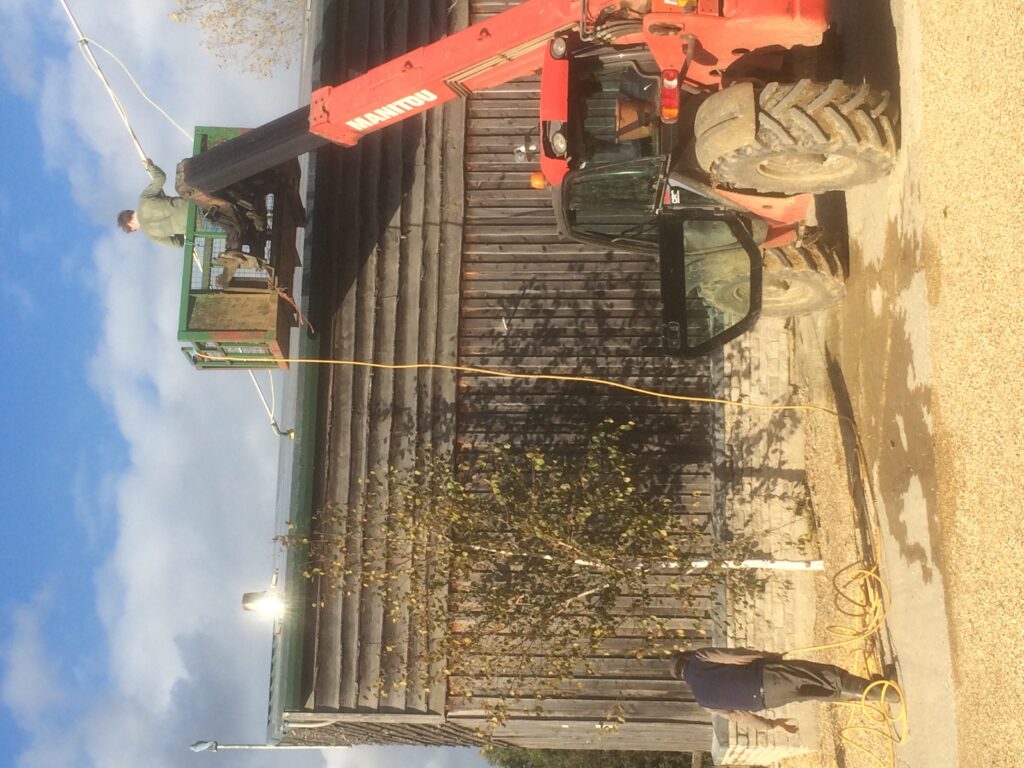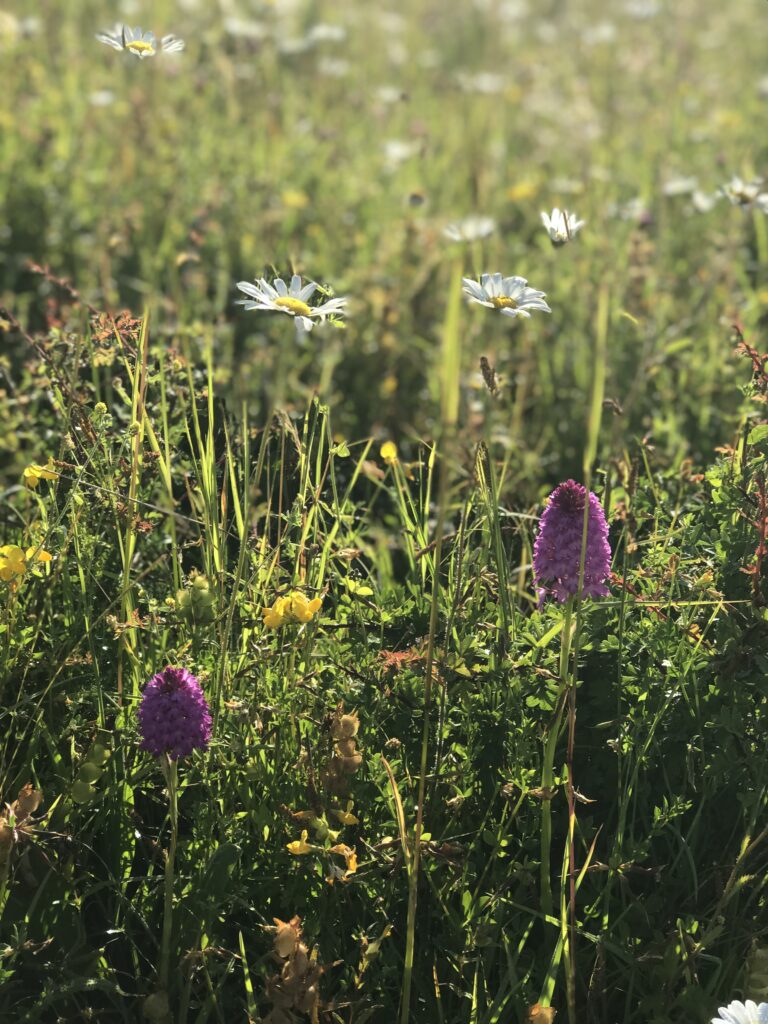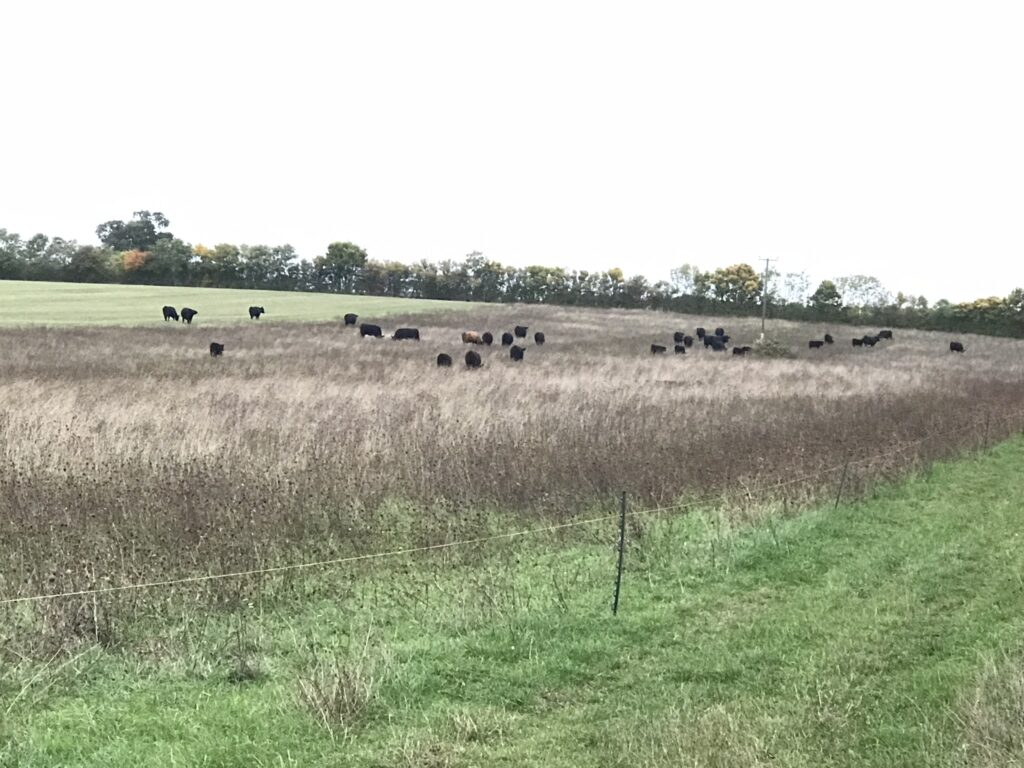Will Mann, Oxleaze Farm 1/3
About the farm - enterprises, organic/PfL/other status etc
Oxleaze and Bradborough Farms are on the Gloucestershire / Oxfordshire border, which also aligns with the border with very poor Cotswold Brash over clay. Even in the heady days of agriculture’s misguided post-war “production at all costs” mentality, our soils were reluctant to provide a sustainable yield.

The farmed area is around 700 acres, standing at around 350ft above sea level and historically in a rain shadow. Most of the farm is now grassland, including 50 acres of flower-rich grassland established 17 years ago, 55 hectares of unimproved pasture and 20 hectares of traditional water meadows. It is grazed extensively with a traditional suckler cow herd of Aberdeen Angus that are 100% pasture-fed, slowly and extensively reared to enhance the healthy eating experience - rich in Omega 3 and fed on herb-rich leys and grasses rich in chicory and sainfoin. We have expanded from 35 cows to 70 and sell stores and finished animals through a local farm shop (Daylesford).
 Species-rich meadow
Species-rich meadow
Until recently the farm had 120 hectares down to organic cereal crops, which has now been converted to grassland – to encourage biodiversity and carbon fixation in the soils.

There are 75 acres of woodland including 25 acres planted in 2014. This is all actively managed to produce cricket bat willows as well as firewood and woodchip for fuel for a biomass boiler which provides heat for 11 properties on the farm converted from barns. These include workshop units and offices, and the Oxleaze Barn wedding and events venue (converted from a former threshing barn).
 Woodchipping
Woodchipping
Power is delivered from a solar PV array of 270 Kilowatts, which supplies 24 properties (offices, work units and residential). There is also a maturing Cotswold Garden, which is open to visitors, and three colonies of bees producing honey from the organic meadows.
Progressively we have increased our involvement with conservation measures, working with the likes of the Farming and Wildlife Advisory Group (FWAG), Pasture for Life and Natural England to begin to rebuild our connection with nature. Now, as fully certified Pasture for Life (for four years) and Organic (Soil Association – for18 years) we have been in Countryside Stewardship agreements since their inception. We are currently in a five-year Mid-Tier programme and also Phase 1 Pilots for Environmental Land Management Scheme.
 Cleaning solar
Cleaning solar
We are reducing our energy consumption whilst at the same time providing healthy tasty food, sequestering carbon and providing clean air, water and healthy soil.
A general description of the biodiversity on your farm - essentially above ground (but reference to below ground if relevant - both flora and fauna)
As a result of the way we manage and farm and of these schemes, and the interconnection between them, we are seeing a fantastic revival of so much; from Barn Owls and fallow deer to massive numbers of voles, field mice, worms, and all the little bugs that are the foundation for the biodiversity that makes England’s countryside so spectacular.
The whole farm is now alive with wildlife, birds, bees, butterflies and insects alongside a thriving population of over 15 broods of thriving English Grey partridge.
 Pyramidal Orchid
Pyramidal Orchid
We are home to many families of lapwings, which nest and rear their young in the middle of fields, thanks to the planting strategy which suits their requirements. We were lucky enough to play host to over 300 lapwings passing through in late winter, enjoying following the cattle around and wheeling across the sky. They enjoyed feeding in the fields behind where the cattle had mob grazed.
 Lapwings
Lapwings
 Mob grazing
Mob grazing
 Bees on sunflower
Bees on sunflower
Below ground – the earthworms continue their work turning decaying leaf biomass into fertile soils. Hares are almost at plague populations, I counted 25 in one field and the deer are an increasing challenge with Roe, Fallow and Muntjac all enjoying the freedom to breed.



